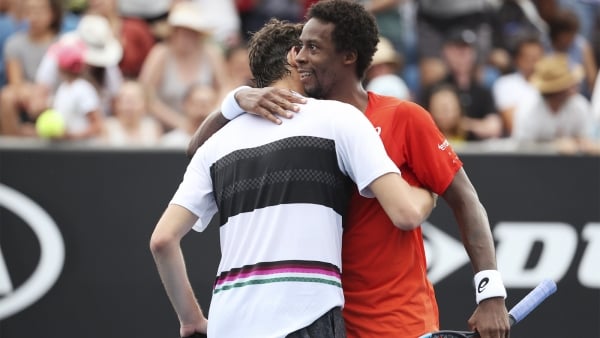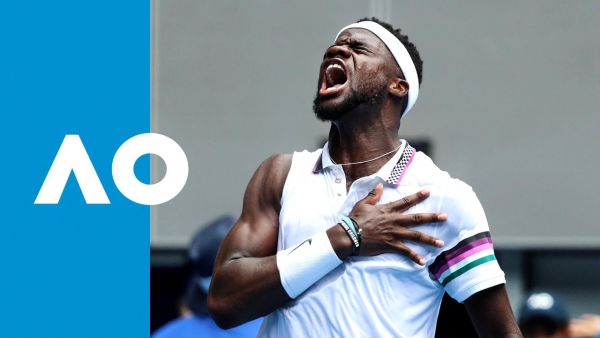Don’t look now, but they are coming. For a nation sated with success (think Pete Sampras, Andre Agassi and Andy Roddick), America is currently in the middle of something of a tennis famine. But there are rumblings: down in the middle to lower reaches of the world’s top 100, the new boys are on the move.
A year ago, the mighty tennis nation that is America took a bit of a pummelling on the opening day of the Australian Open. By the close of play, the serial Grand Slam champion Venus Williams, the highest-ranked seed from the US, John Isner, the previous year’s semifinalist Coco Vandeweghe and the-then US Open champion Sloane Stephens had all lost. Thanks to the 19-hour time difference, it meant that by the time people in California were sitting down to their supper, a great swathe of American players were already on their way home from Melbourne. On the day before, in US time, the tournament had even started. It wasn’t good.
Twelve months on and three days into Australian Open 2019, the Stars and Stripes are still waving over Melbourne Park – but there are newer names doing the waving. Leading the group of young hopes is Frances Tiafoe, who galloped into the third round with a 4-6 6-4 6-4 7-5 win over Kevin Anderson.
He was joined there by Taylor Fritz, who did for Gael Monfils 6-3 6-7 7-6(6) 7-6(5). Mackenzie McDonald could not quite get over the line to add to the American numbers, but the 23-year-old world No.81 gave as good as he got for four sets against Marin Cilic, last year’s finalist, before going out 7-5 6-7(9) 6-4 6-4. Meanwhile, the man who put out Isner in the first round, Reilly Opelka, all 213cm of him, was cut down to size by 173cm Thomas Fabbiano 6-7(15) 6-2 6-4 3-6 7-6(5).
That Tiafoe would become a tennis player was never in doubt – he literally grew up in a tennis club. When he was just a year old, his father, Frances Senior, got a job as a construction worker building the Junior Tennis Champions Center in Washington DC. When the building was complete, Frances Senior got the job as the maintenance man for the whole complex.
At the same time, Frances’s mother was working as a nurse and doing the night shift, leaving Frances Senior in charge of Frances Junior and his twin brother during the day when Mrs Tiafoe was asleep. So he took the boys to work with him, and the two lads pretty much lived at the centre. And boys being boys, they took every opportunity to have as much fun as possible – Frances’s earliest memories are of hitting with his brother on any empty court they could find.

After three years on the tour, Tiafoe is beginning to show off his talents. He won his first ATP Tour trophy in Delray last February, qualified for the Next Gen Finals last November and ended the year as the world No.39. Now he has taken out the No.5 seed and last year’s Wimbledon finalist and made it to only his second Grand Slam third round.
“It’s probably the best win of my career, yeah,” he said. “Those are the matches I feel like I'm dangerous. I always play pretty good in those situations. I've been in those situations quite a lot. I'm starting to feel more comfortable finishing the match, not just playing a match.
“These are the matches where they kind of define you, and help you feel more and more comfortable to keep winning matches like that.”
As for the camaraderie between this new wave of American talent, it could not be stronger. They have grown up together, chased each other all over the junior circuit in search of wins and bragging rights, and now they have all descended on Australia to show the world what they are made of.
“Everyone wants to do better than the other person,” Tiafoe said. “But it's all good blood. We all want each other to do well.
“We actually had, me, Macky, Fritz, Tommy, who else is there, Reilly, we had a massive dinner before the tournament started. How crazy is this? We're all in the main draw. I can remember us playing 12s Orange Bowl or something. We're all here now, all doing great things. It's unbelievable.”

What happens next is anyone’s guess: as Tiafoe pointed out, anyone can beat anyone in the top 100.
“Look at today: he's 5 in the world, I'm 39, I was able to beat him,” he said of Anderson. “I mean, it's so tight now. Anybody plays a good match, you can beat anybody on a given day.”
It may be a little soon to be expecting these young Americans to be setting up camp in the latter stages of the major championships just yet, but they are learning fast. They are on their way.
